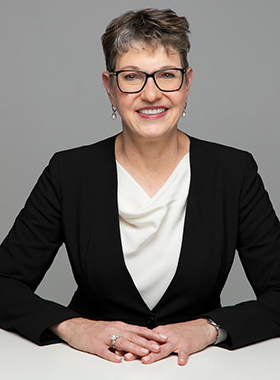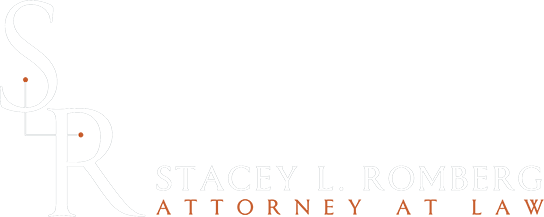After a decade in the industry, including a stint writing legislation for the U.S. Senate, Stacey L. Romberg made the leap – she hung out a shingle and opened her own law firm. By measure of her legal services – a split between business law and estate planning & probate – it might be easy to miss one important distinction that sets her firms apart from many others: Stacey L Romberg, Attorney at Law, is a virtual law firm.
Ms. Romberg employs two attorneys on an “of counsel” basis, one paralegal, and an office manager. She recently wrote about her experiences in the first two pieces, of a four-part series, in the ABA’s GPSolo eReport.
In her article, The Virtual Truth: Seven Factors to Consider Before Opening a Virtual Law Practice, she wrote:
As I write this, I am sitting in my virtual law office—more specifically, a spare bedroom in my townhouse that has been converted into an office. My attire, admittedly, is quite casual: black running tights paired with a T-shirt. Tonight, I’m attending the annual Washington Women Lawyers dinner in downtown Seattle. I’ll need to change clothes at some point, but for now I’m quite comfortable. My cat, Roger, snoozes contentedly downstairs on the sofa. The tea kettle simmers in the kitchen. And, consistent with the stereotype of a home office, the washing machine spins away while I work.
We invited her to a Google+ Hangout to share a little more about her experiences, observations and suggestions for other attorneys considering a virtual law firm. The entire broadcast is embedded nearby, runs about 15 minutes and a summary (paraphrase) is presented below.
What is a virtual law firm and what’s the case for going virtual?
A virtual law firm is when attorneys work outside the traditional brick and mortar environment – for example, working from home, a coffee shop or anywhere except a central law office. Ms. Romberg makes a strong case for virtual firms in cost, time management and work-life balance. She is especially passionate about the environmental friendliness of practicing virtual law, given the paperless characteristics of a virtual office and the reduction in carbon footprints from avoiding a daily commute.
What are the disadvantages to a virtual law firm?
Ms. Romberg sees two primary disadvantages in creating a virtual law firm. First, there is an increase in technology expenditures, and second, concerns over professional isolation. Technology costs are arguably offset by reduction in overhead from managing a physical office; the work around for isolation is to getting out to professional events. Ms. Romberg notes however, such an arrangement isn’t ideal for those people who thrive on the collaboration of a physical office, so it’s important to conduct an honest personal assessment.
Can a brick and mortar firm transition to a virtual firm?
A traditional brick and mortar law firm can transform itself to a virtual business – there are three prerequisites for making it happen:
- Paperless. A firm must be generally paperless and a traditional firm with a history of paper should consider a plan for scanning files it intends to keep.
- Case management. A firm must have case management software to operate virtually.
- Firm personalities. Will other attorneys in the firm be on board? Will they have a comfortable place to work in a virtual law firm? Some prefer the office environment, so it important to conduct an assessment before charting this path.
What are the differences in terms of technology between a virtual and physical law firm?
Perhaps the single most important factor is to have a plan for how attorneys and staff will perform their work. Ms. Romberg’s firm started on a server-based system and later transitioned to a “headless workstation.” She keeps small computers – just the boxes without screens – (headless workstations) in a closet that are configured with all the software and tools her staff needs. Her staff can log into these stations from their home office. She’s careful to point out virtual firms must be sure to create – and stick to – a technology budget to manage the firm’s IT needs.
As a LexisNexis Time Matters customer, what tips would you offer to other customers for getting the most out of the software?
Time Matters serves as the platform for running Ms. Romberg’s virtual law firm. It provides office calendaring, digital client files and is the time and billing system. It also serves as a means for collaboration – she and her staff communicate through the “to-do” lists and messaging services within the platform. Often she observes independent attorneys put off investing in a comprehensive system for running a law firm because of the cost. However, she notices that firms end up purchasing five or six different programs, to solve different business problems, which cumulatively add up to the same cost. Her advice is that technology for law needs to be implemented in a cohesive, rather than piecemeal, fashion.
* * *
Many thanks to Ms. Romberg for taking a few moments with us and answering a few questions; connect with her on Twitter or Google+. Her second article in a series on virtual law for GPSolo is linked above; her first article can be found here: The Virtual Truth: Taking on Technology.
Reprinted with permission from LexisNexis Business of Law Blog

 Phone: (206) 784-5305
Phone: (206) 784-5305